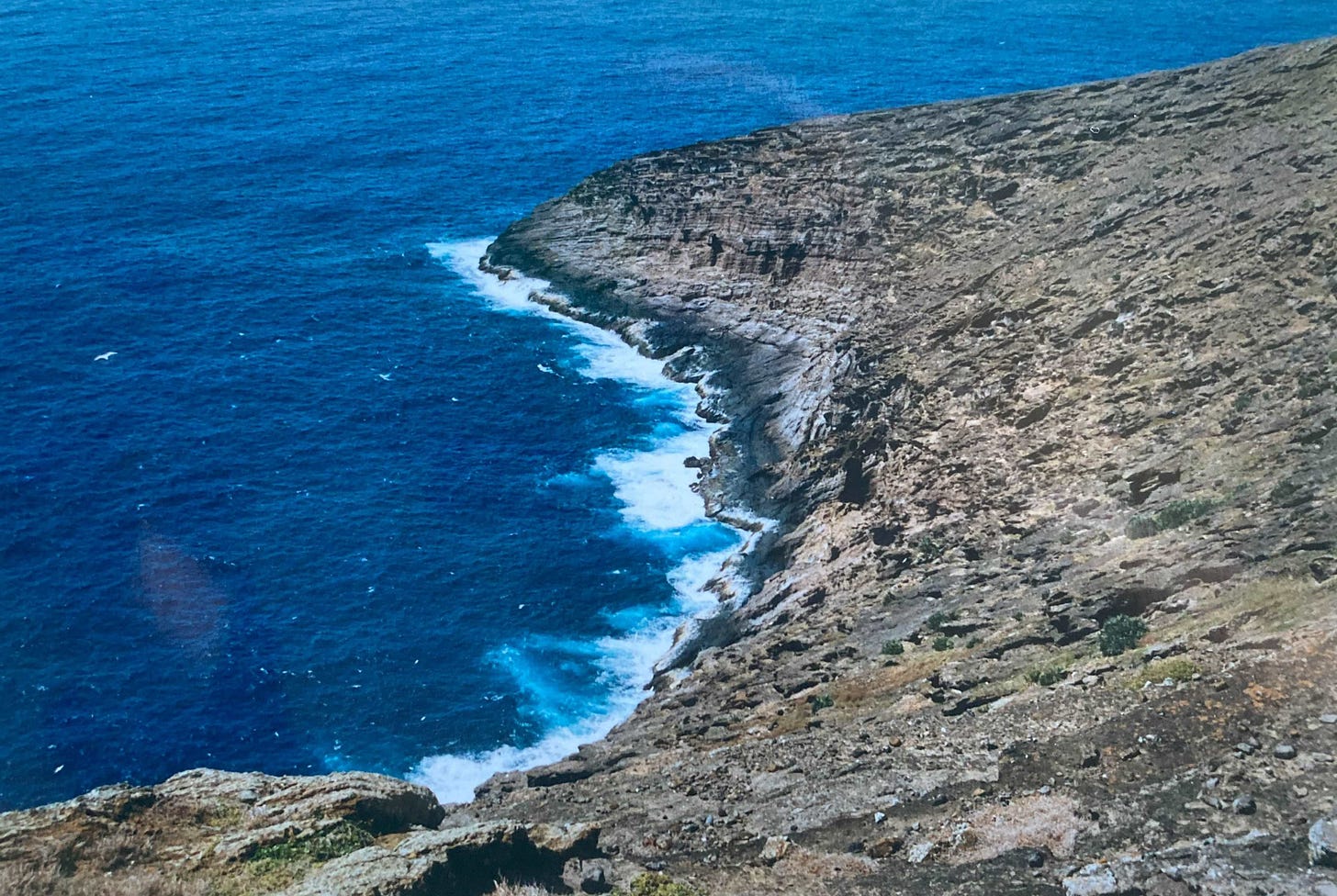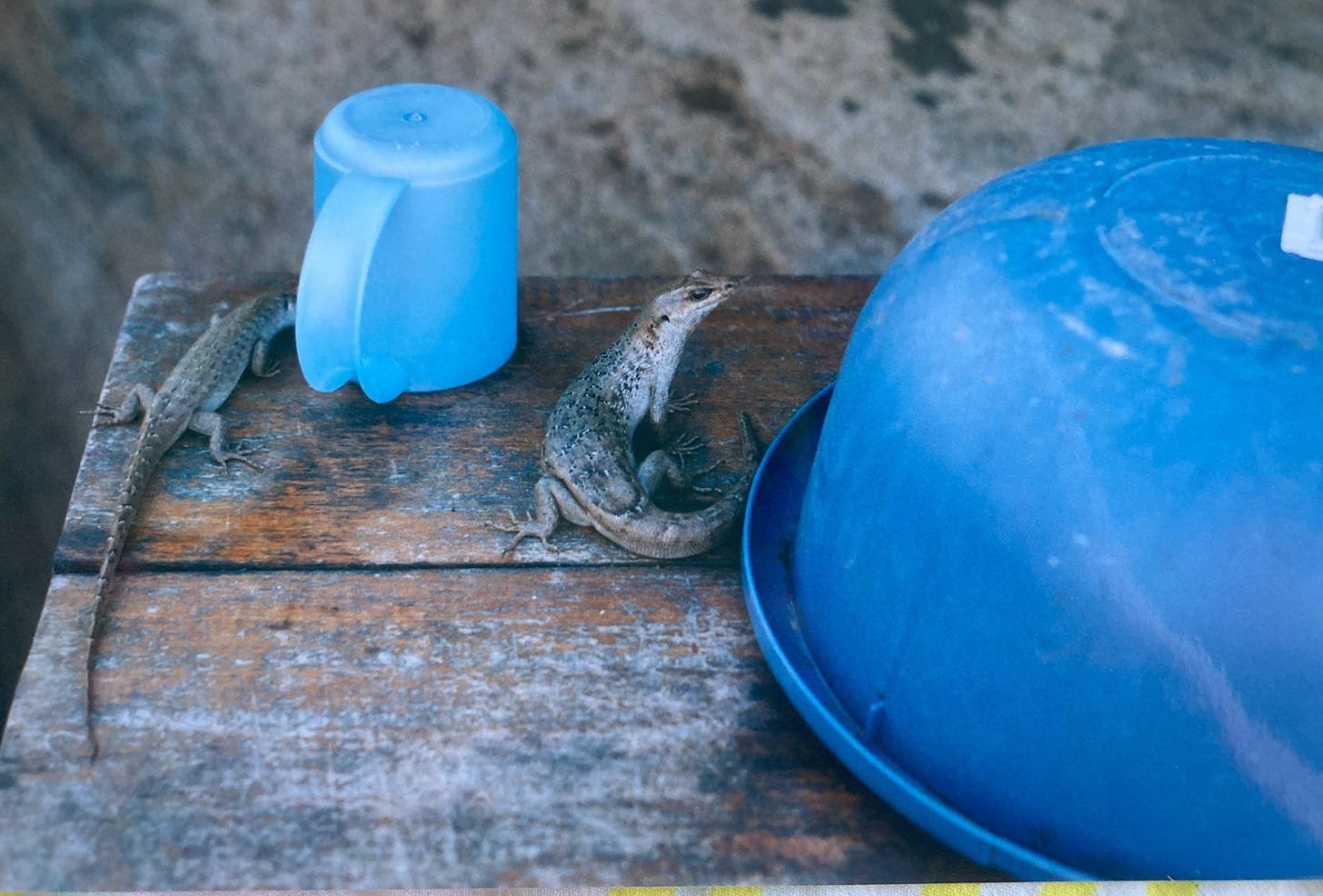When you sometimes work in remote areas, you get used to toilet facilities which might not be up to your preferred standard. Most of the time, I barely remember them. I’ve experienced plenty of smelly long-drops in the New Zealand back country, but it’s the stunning views and fascinating plants which stay in my memory. However, a few toilet experiences were so remarkable that they warrant a special mention.
In Antarctica, there are strict rules to protect the environment. There’s no sneaking behind a rock for a quick pee. And so, whenever we went beyond the base for a reasonable period of time, we had to carry pee bottles and biohazard bags. Women also carried a device called a FUD, meaning feminine urinary device, which allowed us to use our pee bottles standing up. Using them was disconcerting – I had to overcome overwhelming feelings that what I was doing was completely wrong.
In Utah, at the Mars Desert Research Station, there was an issue with the pipes at the base, which meant the toilet there could only cope with liquid. I searched through the cupboards and found some large, heavy-duty zip-lock bags. Then, I cut down a 1-gallon plastic milk bottle to hold the zip-lock bags open, creating an improvised toilet. Again, there was initially a disconcerting feeling of doing something wrong. But since NASA’s Apollo astronauts had to use plastic bags, I termed it “the authentic astronaut experience”.
My favourite toilet experience, however, was in Mauritius.
Twenty kilometres north-east of Cap Malheureux (Cape Misfortune), which is the northernmost tip of Mauritius, lies a 219 hectare lump of rock called Île Ronde, or Round Island. It wasn’t always a lump of rock. It was once covered with forest and palm savanna, but goats and rabbits were introduced and they ate almost everything. With no plants to hold the soil, most of it washed away, and when I visited in 2002, large parts of the island were bare rock.
Despite the destruction caused by the goats and rabbits, there were no rats on the island, and that allowed the survival of endangered reptiles and seabirds. The island was designated a nature reserve and the goats and rabbits eradicated (in 1978 and 1986 respectively). By 2002, there was a restoration project well underway. There was a brand-new hut on the island which could accommodate up to four people, and at least one person was there year-round to manage the restoration.
There are two ways to reach Round Island, and I was lucky enough to get there the easy way. The Mauritian Wildlife Foundation has an arrangement with the Mauritian Police. Once a week or so, the police helicopter visited the island, taking people on and off. It was a big, powerful helicopter, well able to cope with the constant wind on the island. On my way over, I sat in the back row of seats, but on the way back, I was given what was regarded as the best seat – the far left in the front. It was a dubious privilege. It was the best seat because it had the best view, and one of the reasons it had the best view was because there was no door. It was noisy and windy and utterly exhilarating.
One day, the island ranger showed me the hard way to get onto the island. We scrambled down the rock to stand near the water, watching it rise and fall with the swell. There was a flattish rock platform, and that was the landing place. On the calmest of calm days, the boat would come as close as possible, and people would jump. The day I visited wasn’t calm, and I couldn’t imagine how people ever got on and off the island. However, I did find a video which includes people landing on Round Island (the landing is around the 1.40 minute mark).
The rest of this article is for paying subscribers. If you value the time and energy which goes into The Turnstone, I would love for you to join me as a paying subscriber. Also, if you are one of the kind people who has supported me through Buy Me A Coffee and you would like to read this article, just reply to this email and let me know you’d like the full article, and I’ll send it to you.
Despite the difficult access, there have been regular visits to the island since the 1970s. The visitors from the early visits wrote up trip reports, and there were boxes of these reports held in the hut on the island. In the heat of the day, when going outside on the baking hot rock was ill-advised, the two other people on the island took a siesta. It meant that the computer was free, so I read through the reports and recorded everything that they said about introduced plants.
The hut on Round Island was something like the back country huts managed by the Department of Conservation in New Zealand. However, it wasn’t as large as the average back country hut. It was around the size of a shipping container, and since it was built from metal, it looked like one too. There was a door at one end, and four bunks at the other. By the door, was the kitchen, which had a bench, a gas burner and storage. Between the kitchen and the bunks was a tiny office, with a laptop run off a solar battery, a stool and the files I was working through. In the middle of the day, the temperature was stifling, but at least it was out of the sun.
Although we cooked inside (with the door and window open for ventilation), dishes were washed outside. We’d carry our dirty dishes over to an outdoor bench with a basin on it, where they were washed and left to dry. If we left the dishes dirty for any length of time, they’d attract an animal which managed to be both a pest and a critically endangered species at the same time, the Telfair skink — more onthem in a couple of weeks. To wash the dishes, we’d fill the basin with water from a tank, and when the dishes were clean we’d water plants with the dirty water, since there was a severe water shortage.
With very little soil left, any rain that fell either evaporated off the hot rock or quickly ran off. There were deep ravines but nothing close to a running stream. Rainwater was collected from above the hut, but there wasn’t much of it. I had one “shower” the whole time I was there. I used two 330ml soft drink bottles. I washed my hair with that as well, and the island’s ranger was still cross with me for wasting water.
The toilet facilities – which I’m sure you’ve been waiting to hear about – used no water at all, except for hand-washing afterwards. Round Island had a top-of-the-line composting toilet. It was some distance from the hut, tucked in a gully. On the way to the loo, there was a wooden lever by the path. When the loo was free, the lever was up, when you went to the loo, you moved it down, so anyone coming along knew not to disturb you. This system wasn’t unfamiliar to me, as the toilet at Brise Fer, a camp in the forest, had a similar system. But at Brise Fer, the toilet had a roof and walls.
On Round Island, the toilet had no shelter – it was in the open air. Clearly, this was not ideal when it rained, which happened for a few hours on one day when I was there, but the rest of the time it was amazing. During the day, I sat on the loo and looked down the gully and out to the ocean. If I looked to the left, there were latanier palms, an endangered species found wild only on Round Island although they are now cultivated around the world. Sometimes, on those palms I would see one of the neon-coloured Mauritian day geckoes. Once, I saw Gunther’s day gecko, a large gecko found only on Round Island.
The Round Island toilet was the only toilet I’ve ever used where I took my camera with me when I went.
Using the Round Island toilet at night was a completely different experience. Round Island is home to a huge population of seabirds. These were highly active at night, constantly calling, coming and going, and wandering across the path. A couple of times, they nearly collided with me when I was making my last trip to the toilet before bed. Numerous times I nearly tripped over them.

And they were noisy. I found some recordings of the main species, a type of shearwater found throughout the Pacific and Indian Oceans, which is known as the fouquet in Mauritius. But the recordings don’t do the sound justice. If you turn the volume up to maximum, then imagine that surrounding you as you sat on an open-air toilet, it might give you a flavour of the Round toilet experience.
Here's the link to the video with the Round Island sea landing.
Round Island - Mauritius (youtube.com) (13 minute video)






Love knowing about the loos in remote places. The nature must have been spectacular.